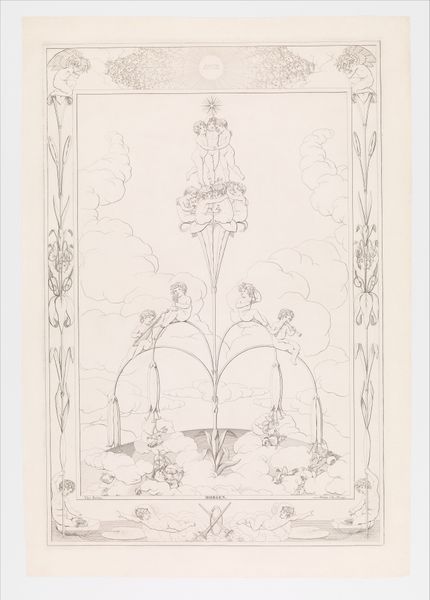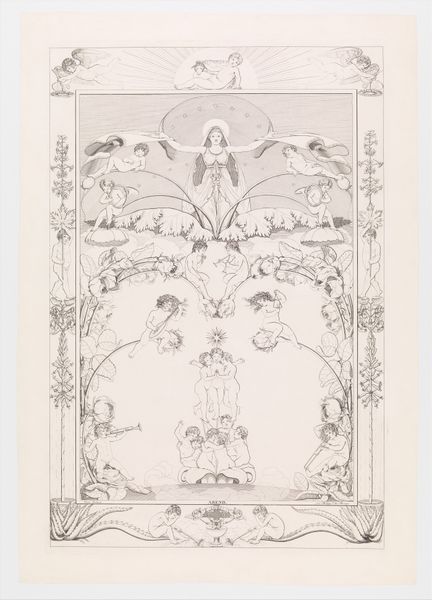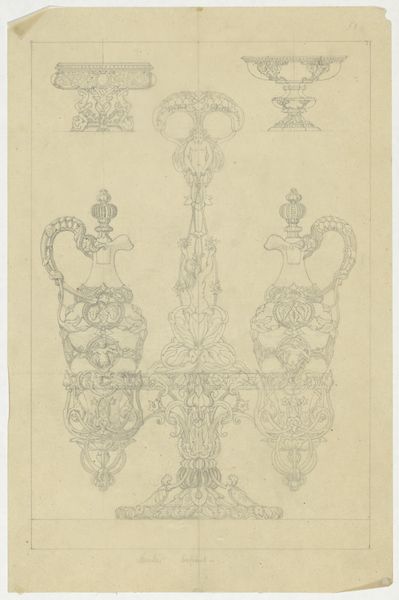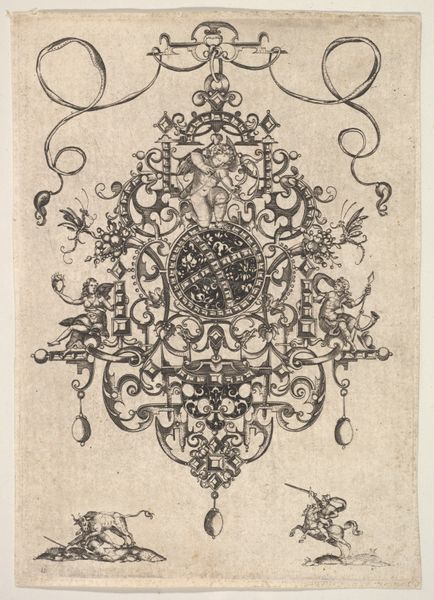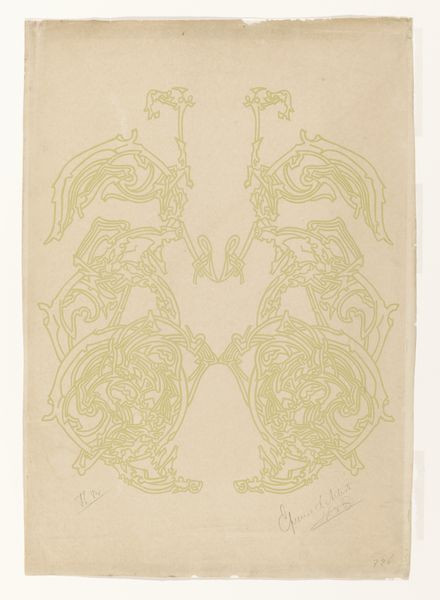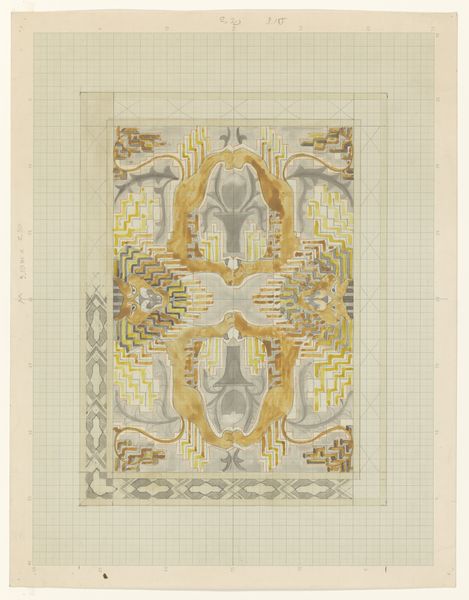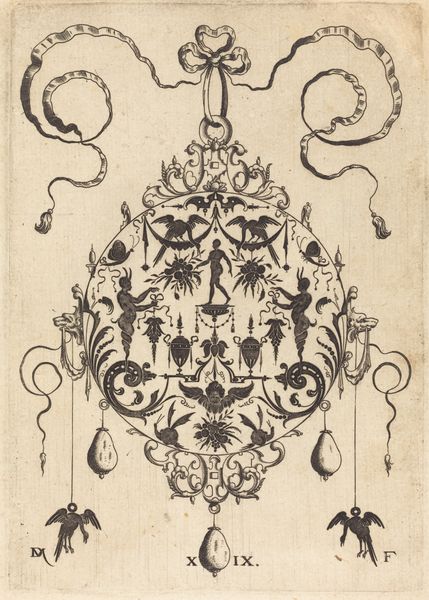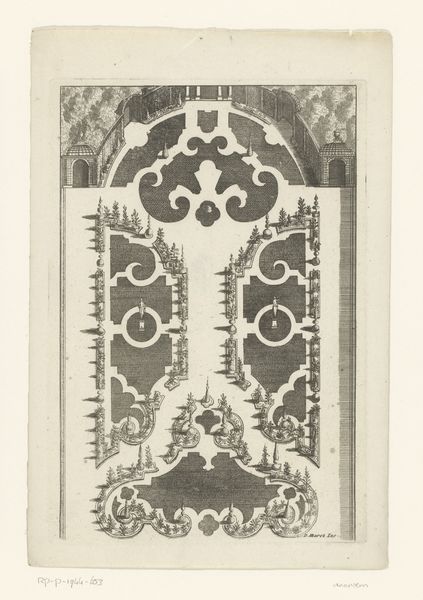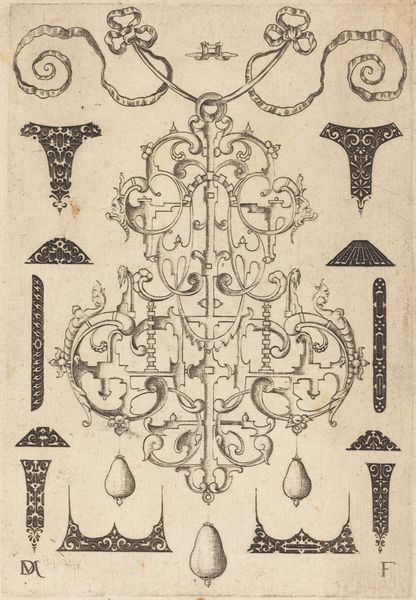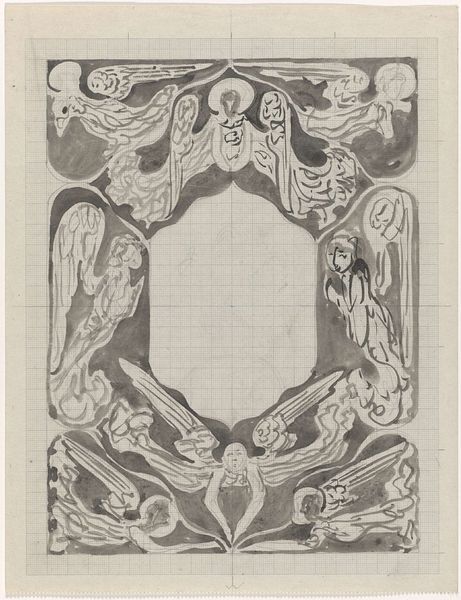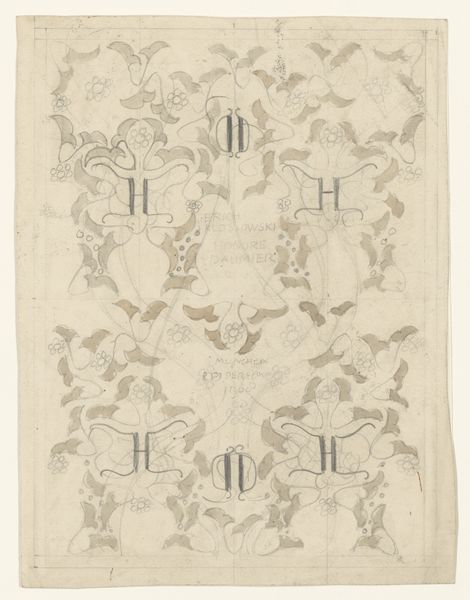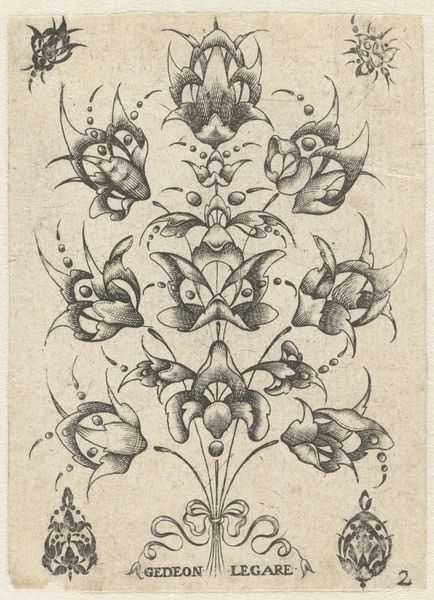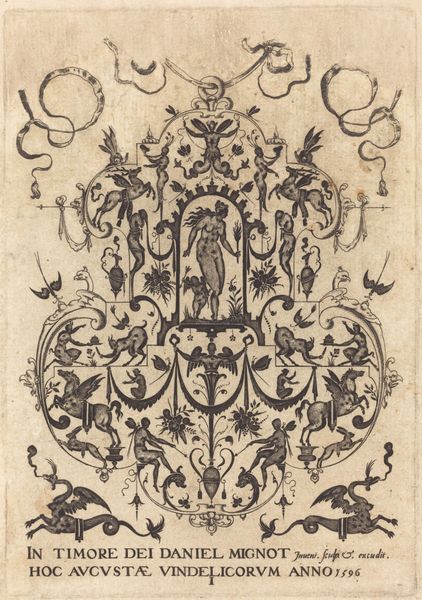
drawing, print, ink
#
drawing
#
allegory
# print
#
etching
#
figuration
#
ink
#
romanticism
#
botanical drawing
Dimensions: sheet: 30 5/16 x 21 7/16 in. (77 x 54.4 cm) plate: 27 13/16 x 18 11/16 in. (70.6 x 47.5 cm)
Copyright: Public Domain
Curator: The first thing that hits me is the density of detail; it’s almost overwhelming but also quite beautiful, intricate and slightly mad. It feels like a dream pulled kicking and screaming onto paper. Editor: We’re looking at “Night,” an etching in ink by Philipp Otto Runge from 1807. It's part of his series "The Times of the Day." You can currently find this drawing over at the Metropolitan Museum of Art. Runge was deeply into Romanticism, and this piece just vibrates with its symbolic weight. Curator: It does, doesn't it? I’m immediately drawn to those cherubic figures at the top, poised under that all-seeing eye motif. There’s a gentle symmetry countered by a touch of the grotesque lower down with those owlish observers…a visual poem with footnotes in shadows! Editor: That eye is a classic symbol of divine providence, all-knowing, ever-watchful. And then, below the cherubs, you have Night herself, almost suspended. The owlish creatures definitely tap into night’s association with wisdom, but also darkness and the unknown. The romantic trope! Curator: Absolutely, and note how everything seems to sprout and grow from a central floral motif, like the generative force of the night itself, creating its own world in delicate line work! But even in this supposed tranquility, I see hints of the slightly unsettling. I think that Runge managed to express something quite dark that lurks in the depths. Editor: Runge was heavily influenced by the mystical writings of Jakob Böhme and other Romantic thinkers and their ideas about the interconnectedness of nature, spirit, and humanity. You see echoes of that in the complex web of symbols and imagery. And your unease might be spot on: night isn’t always peaceful. It can bring dreams, but also anxieties. Curator: The longer I gaze into it, the more this landscape of "Night" starts to resemble a deeply felt inner landscape, mapped out for us. He rendered the unconscious and summoned some very evocative things for the viewer to see, reflect on, and connect with their emotions. It has quite a spell-casting presence to it. Editor: I find myself seeing it anew, reflecting on the enduring power of symbols to shape our understanding of ourselves and the world around us. There’s such a density of detail to decode, connecting viewers to generations of symbolic thinking that ripple outwards, informing the piece and continuing in its wake. Curator: The ability of this piece to create this experience confirms my understanding of what art means to me: connection. It is as pertinent and meaningful today as it was at its conception in 1807. Editor: Agreed, Runge gives us so much food for thought. Night offers a chance to go to a completely other, darker place than the every-day in life. A meditation on sleep, imagination and ultimately, the cyclical nature of existence.
Comments
No comments
Be the first to comment and join the conversation on the ultimate creative platform.
